Amalia Mtz. Murgia: "We don't bring animals that know they suffer"

Our aquarium has been very clear. In 1908 the Oceanographic Society of Gipuzkoa was established. In the statutes it says clearly that he had to promote respect to the sea and was much investigated for that time. It was, therefore, a centre of knowledge of the sea, at the same time that its objective was to transmit it to the public.
Today we continue with the same task and we could say that we are based on three pillars: the conservation of the collection, in my particular case of the collection of living beings, vertebrates and invertebrates; the dissemination, which is the responsibility of the Department of Education; and the research. These are the objectives of the Aquarium of San Sebastian, a non-profit foundation that I think is the most appropriate.
There are other aquariums with these objectives, but often they find it difficult to carry them out, especially by research, which generally has lucrative purposes.
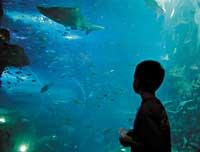
According to the new European directive, the new centers, both aquariums and zoos, must meet these requirements.
In the case of the Biology Section of the Aquarium, for example, with regard to performances abroad, we have a program of conservation of marine turtles, and almost every year we will release turtles along with other aquariums of the Atlantic. Moreover, when we obtain results of interest in the studies, we participate in congresses and publish them in magazines.
We see fish, but behind there will be a process. As for the facilities, how are the facilities of the Aquarium: oceanarium, aquariums...?The maintenance of the aquariums consists of two parts, the biological one and the one carried out by the maintenance department. In Biology we deal with everything related to fauna and flora. For example, every day two aquarists immerse themselves in the ocean to clean the bottom, to siphon, to clean acrylics and walls, etc. They also have to feed the fish. In the afternoons we also have to clean the filters.
Do you use the same water for all fish? How is it renewed?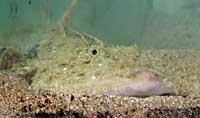
Yes, we use the same water. Fortunately, we have very good quality water in the bay. We have a submareal outlet that makes the water we take through high pressure residual filters, we sterilized it with ultraviolet light and distributed it to all aquariums. The same water is used in all aquariums, but each area has certain peculiarities, especially in terms of temperature, and in summer, for example, we have to cool water for several aquariums.
In addition, each aquarium has its own circuit, filters, cooling or heating system and some ultraviolet filters for water sterilization. However, we do not use the closed circuit, we prefer to mix the outside water little by little and has given us good results.
As for aquarium animals, isn't it contradictory to have what you want to protect in a cage or breast?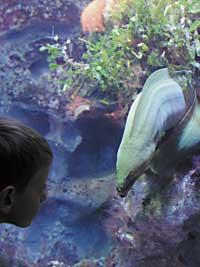
I don't think it's a contradiction. On the one hand, because there are many people who can't dive; there are videos and books, but watching live is not the same. In my opinion, the sacrifice with some specimens is very small compared to the number of specimens that there are or we eat in the sea, far surpassing the sacrifice that is transmitted with the aquariums, that is, with the direct exposure of the seabed and the consequent diffusion of respect due to the oceans.
With the new legislation is the conservation of the first living conditions of this type of centers, and in it we act with great rigor. We don't bring animals that know they suffer and we don't have animals that don't adapt to captivity, despite their spectacularity and attraction. On the other hand, I think we keep them in a pretty good state, and one of the indicators is that some of the species we have in the oceanarium reproduce.
How does the Aquarium get non-native species?Mediterranean fish are obtained through exchanges with other aquariums. In the case of tropical fish, however, there are suppliers. The most common thing is to go to them.
In the case of tropical fish, one of the main conservation problems is the traffic of animals.Yes, that's right. Sometimes very aggressive methods are used for fishing, such as cyanide or dynamite, although it is totally forbidden. The normal thing is to ensure that suppliers or their local suppliers have not used such methods.
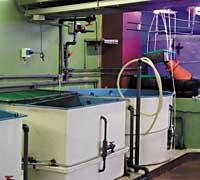
In addition, as for captivity, we have no protected species, unless we have any program. We have turtles, for example. They are classified as species of special interest, but we have in progress a program of marine turtles. We collect, heal and release the turtles that find people or fishermen. We also have a reproductive program underway with exposed sea horses.
In the case of bird cages, in theory there is a control of bird breeders and rings and certificates are used. Are there fish?No, there is no. However, in this type of programs it is not usually worked alone, but in contact with other aquariums. We would not grow marine horses to sell them on the market. We would exchange them at most with aquariums that would want to be their collection of sea horses.
Well, after catching the fish, what process do you follow in the Aquarium?Once the fish arrive we place them in quarantine and keep them for 24 hours in observation, we study how they are, if they have wounds, etc. Sometimes they arrive with many parasites. Then they are subjected to treatment according to needs: antibiotic, antiparasitic... We also begin to give food, which we think will like what we have at hand. Many times, to reduce stress, cover the containers, put them in the dark, make little noise and sometimes give them vitamin C, very suitable against stress.
As for food, how are they handled with different species?
Food may vary, but fortunately, except for some herbivores, most species are omnivorous, omnivorous or, alternatively, carnivores. So we try to make the diet rich: fish, squid, mussels, white fish, blue fish... We attribute to each aquarium the food that we consider most appropriate.
Do they have health problems?Yes, someone of those fish is always sick. We have never had serious problems, but they get sick. In any case, the response to treatments is very good. Some species have been in the Aquarium for 8 years. And that yes, species that do not adapt to captivity and that often sick, because in the end we do not have them here.
Why can't you take photos with the flash?Fish have no eyelids so they can't protect the eye from flash. In addition, it is not worth it, since with so much glass only shines in the photo. However, it does not seem that people respect the ban very much.
Jokin Gilisagasti, fisherman of the Aquarium

As a professional fisherman I have been for more than 20 years, but in 1998 I started working for the Aquarium of San Sebastian.
Do you catch them on demand or go out to the sea and see what there is?Sometimes it is about specific commissions that I try to catch these species, I have tried it because it is not like going to the warehouse. On other occasions, although they do not need anything special, I disembark in search of basic maintenance fish or unique species, rare or difficult to find.
Can you predict the year or season?No, it is very difficult. Many factors influence. In addition, sometimes you think there are adequate conditions to capture a certain species, but there are hardly any fish, or there are, but that day they don't want to eat or grab the hook. It depends on species and densities. It is usually known which areas are good or in what conditions it is captured more or less, but it is difficult.
How do you catch them from the boat, submerged, with the hook?Most of the time fishing I do it from the boat, but you have to choose well the tackle, since we have to avoid damaging the fish. That is why we use the hook; cutting the hook and taking it forward, they do very little damage. Nets, for example, do not serve to obtain live fish, since they cause great damage and the recovery of this fish is a very slow process.
From time to time I leave with divers to collect stones, algae and invertebrates.
What do you do to stay alive after being captured?We fish them and introduce them to the ship nursery. To dock, they call the Aquarium and they come with their van, with their nurseries.
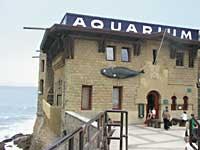
However, with fish of great depth there is another difficulty. As they emerge, air usually enters the swimming bladder and do not last long. We have done the way to get the air, we perform a small operation on the boat itself. This is what we have done to hake, for example, and that is why the Aquarium has had hake in specific projects. This means approximately 80% of the fish we catch, almost all those who live more than 20-30 meters deep.
The Aquarium will welcome what is fishing. That is, do the species that cling to the hook predominate?Yes, of course, the ease of capture influences what will be visible in the Aquarium. Fish like the monkfish, which are in the background, are very difficult to catch with the hook, and less frequent in the Aquarium. You cannot have all the species, among other things because the capture of some is practically impossible.
Buletina
Bidali zure helbide elektronikoa eta jaso asteroko buletina zure sarrera-ontzian











